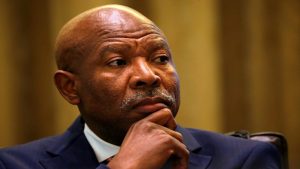Reserve Bank Governor Lesetja Kganyago has held dialogue aimed at shining the spotlight on the cost-of-living crisis in South Africa.
Kganyago spoke during the University of Limpopo’s Turfloop Graduate School of Leadership series of lectures held in Polokwane. In his address, titled “Dealing with the high cost of living”, Kganyago emphasised the role of the Reserve Bank in lessening the impact of the high cost of living.
Hawkers at a market in the province say just five years ago they used to sell potatoes at only R25 but now they say the price has gone up, indicating further hardships to come for more households in South Africa.
“Tomatoes were R5 in the past, we used to purchase a crate of tomatoes for only R35 and now the crate has increased is R120 to R150. Since the prices have increased, people are struggling to afford even for us hawkers, we can’t afford some of the goods. They should reduce the prices so that our customers can be able to buy from us,” a hawker explains.
“In the past, we used to buy tomatoes from hawkers at an affordable price and now the prices have increased to R25 and now I am short of R5, I do not have enough money. I used all I received from grant and I am supposed to pay R15 taxi fare. The government should reduce the prices because we are struggling,” a resident says.
According to the Reserve Bank governor the current domestic economic outlook remains unfavourable as it erodes the purchasing power of the rand.
“High inflation erodes what the rand can buy and thus makes South Africans poorer. Over the past 18 months South Africans along their global counterparts, have enjoyed a rise in the cost of living this came at a time when South Africans had become accustomed to low and stable inflation, after hovering the upper half target of the target range for a year. South Africa’s inflation breached the upper limit of the SARB, three to six percent in May 2022 and reaching high of 7.8 percent in July 2022 before beginning its retreat,” Kganyago elaborates.
Kganyago added that many factors are still threatening growth and that risks to the domestic economic outlook remain high. This despite some food prices having eased over the past year.
“Domestic food price inflation is still elevated while the risk of drier weather conditions in coming months has increased, domestic food prices also remain at risk from exchange rate volatility as well as the impact of geo political developments,” Kganyago added.
Power cuts are also not aiding short-term economic growth together with high fuel prices. Inflation is projected to gradually stabilise aligned with the central bank’s target range of between three to six percent by the year 2025. With a view that the burden felt all across by the public will lessen.






